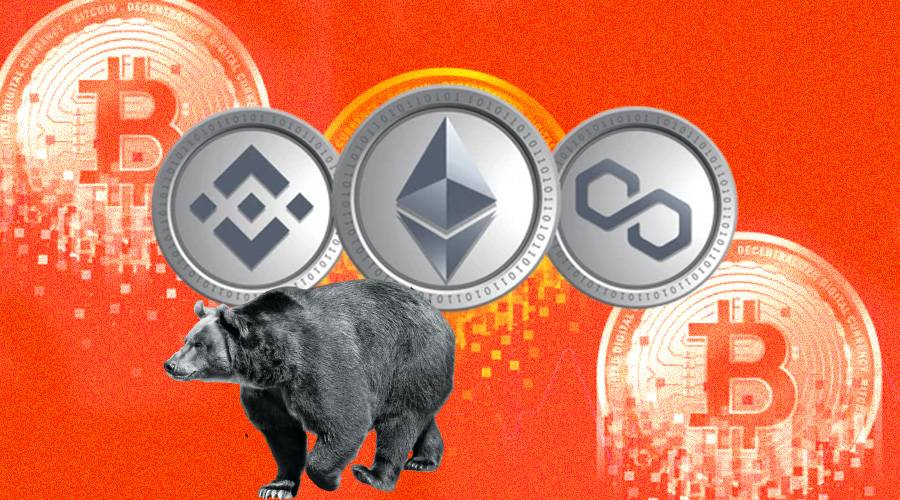How to recognize a crypto bear market
Every investor looks for different features to determine when they're in a crypto bear market. Realistically, there's no one strategy to mark the transition between a bull and bear market. It may take weeks or months before investors admit that a recent downward trend is a legitimate bear market. There are, however, a few features that often occur during a crypto bear market:
Lower highs and lows: If crypto prices are in a bear market, traders should see prices continue moving downward. Even when a cryptocurrency has a mini upswing, these prices tend to hit their head on strong resistance lines before continuing down. When cryptocurrencies continue to make lower highs and lows on multiple timeframes, they're likely in a bear market.
Limited or negative media coverage of crypto: News sites usually only run stories on crypto during peak bull market mania. When a crypto bear market hits, there are generally fewer feature stories about the Web3 industry. Even worse, significant negative headlines may surround crypto during a bear market.
Declining on-chain activity: During a crypto bear market, you probably won't see people using blockchains as much as during a bull market. A decline in network activity suggests there's less interest in crypto, which often translates to low demand for digital assets.
Increase in stablecoin issuance: When crypto traders want to take risk off the table, they often swap their crypto holdings into stablecoins. During crypto bear markets, you may see the stablecoin market cap increase as more crypto investors are sitting on the sidelines.
How long does a crypto bear market last?
There's no knowing how long any market cycle will last. However, as was the case following the 2017 bull run, crypto bear markets can last for years before a significant rebound. You may have seen some investors refer to these long bear markets as crypto winter.
Some people believe digital asset prices rise and fall, along with Bitcoin halvings. When Bitcoin's block rewards decrease every four years, crypto traders expect a sharp price increase due to the supply shock. According to this theory, crypto prices rise for a few months after the Bitcoin halving before crashing and falling into a multiyear bear market.
While the four-year cycle theory is trendy, it's not an exact science. The crypto market has a relatively short price history compared with institutions like the New York Stock Exchange (NYSE). Although the four-year cycle played out in the past, it's too early to say whether it’ll work after every Bitcoin halving.
Critics also argue that the four-year cycle theory is simply a self-fulfilling prophecy. In other words, the boom and bust cycle happens only because so many people believe it’ll happen.


